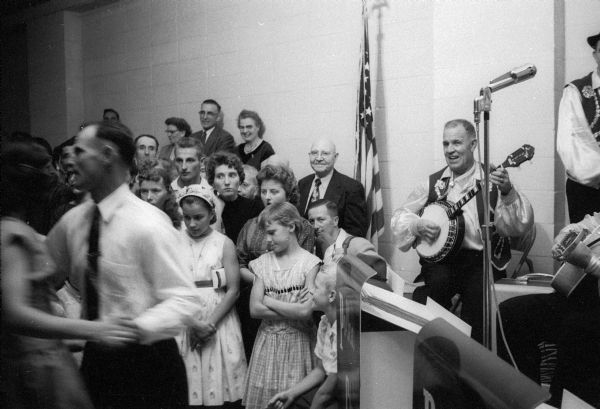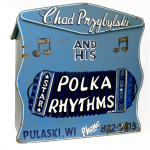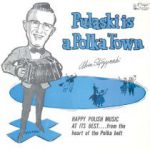Polka first rose to popularity from humble folk traditions in Europe during the 1840s. The 2/4 dance step was markedly more rambunctious than traditional ballroom moves, and even became popular among the Parisian upper class. Immigrants to the United States brought their own unique variations with them, particularly to the Midwest, and polka evolved into various new forms according to its player’s place of origin. Distinct styles still recognized today include Polish, Slovenian, Bohemian, and Dutchman.

After World War II, polka made its first mainstream American appearance thanks to Cleveland, Ohio’s celebrated “Polka King,” Slovenian-American Frankie Yankovic. Yankovic’s 1948 hit “Just Because” and 1949 tune “Blue Skirt Waltz” sold millions of records. Polka remained popular with younger crowds until the newer sounds of rock and roll music began to overshadow it in the 1950s and 1960s.
This story was edited and adapted from AGH’s original Curators’ Favorites article.
SOURCES
March, Richard. “Wisconsin Remains Polka Country” in “Wisconsin Folklife: A Celebration of Wisconsin Traditions” (Wisconsin Academy of Sciences, Arts and Letters, 1988).
Leary, James P. “Polka Music in a Polka State,” in “Wisconsin Folklore” (Madison, WI: University of Wisconsin Press, 1998).
Johnson, Mark. “Polka still has a few twirls left,” in the Milwaukee Journal Sentinel, June 3, 2005.
Falk, Nathan. “Get ready to polka in Pulaski this weekend,” in the Shawano Leader, July 20, 2006.
Smodic, Frank Jr. “Frank Yankovic…America’s Polka King,” 1990.




